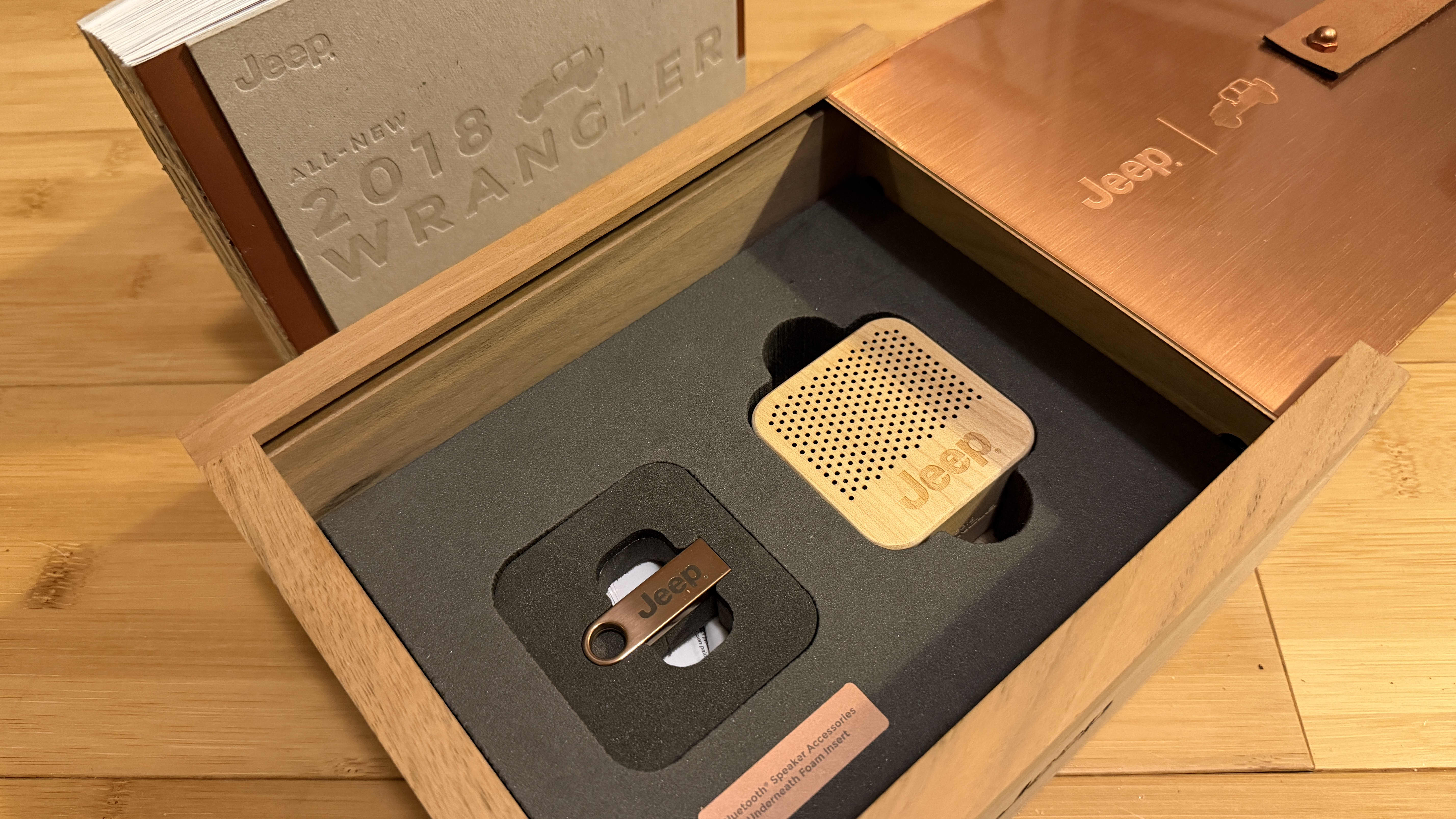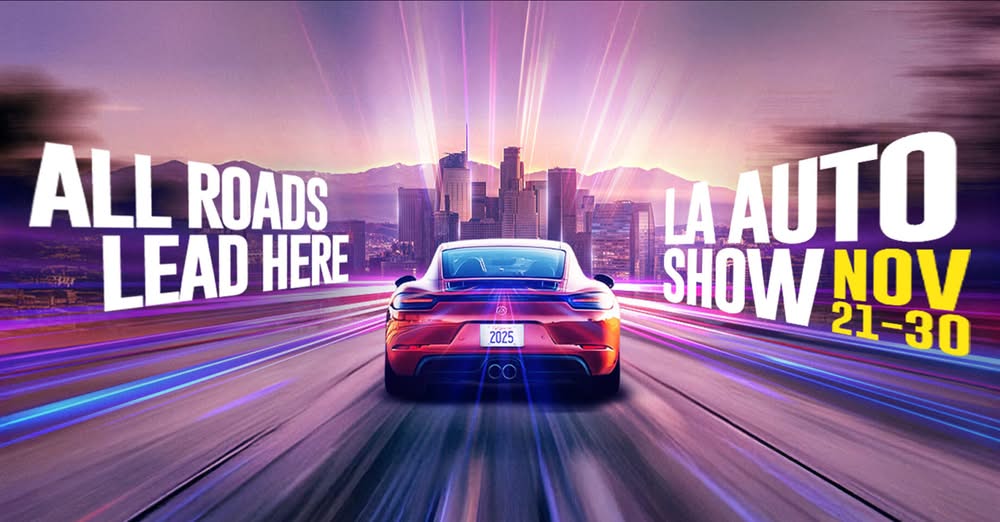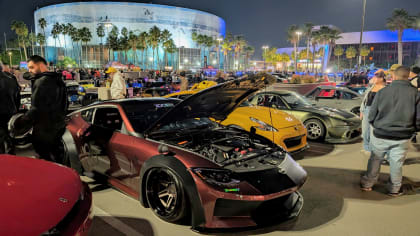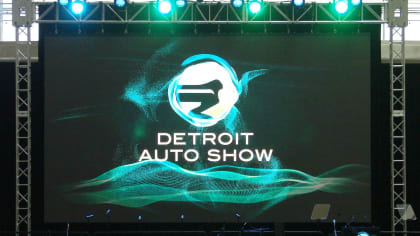THE GOLDEN ERA OF AUTOMOTIVE PRESS KITS

Automotive journalist swag once included custom lawn chairs, elaborate machined metal press kits, hard bound books, and1:18 scale models of the debut car. One day, all that was replaced by flash drives, then business cards with the brand’s website, and then by QR codes...
By John Grafman
Thu, Nov 13, 2025 05:00 AM PST
Featured image above: The press kit for the 2018 Jeep Wrangler included a bluetooth amplified speaker, hard bound book, and flash drive - all encased in a wooden box with brushed metal and leather trim (Nakano photograph).
"I remember the mad scramble among a throng of "media" people (none of whom I recognized as fellow MPG members) who descended on the pressroom with wagons and rolling suitcases to secure as many of those big nicely-bound three-ring press kits of the past era as possible (and to put them up for sale shortly thereafter). I CAN name names* if called for." – Doug Stokes

Once upon a time, the auto show press days were a must-attend event on every automotive journalist’s calendar, along with a handful of other auto expos. Besides all the new products, concepts, press conferences, and industry executives spread out over two days and evenings, there was one more reason to attend—the press kits.

Back in the early days, journalists could be assured that OEMs and others would provide copy and images for the press to use for new models. Often, these printed copies would come in folders or even three ringed binders. Images included would be either photos, slides, or negatives.

Data would include the specifications and relevant info on the new vehicle and other assorted tidbits to provide the editors with content need to craft an article, or several, if the PR people had enough sway with the publication.

As one can imagine, given the vast number of participating car companies at an auto show, the volume of press kits and related swag got to be both sizeable and heavy. In fact, one would need the likes of a Sherpa guide or porter to help carry the ever-growing pile of press kits that needed to be transported from one OEM press conference to the next. For those attending the LA Auto Show, this was no small task, given the distance and the territory covered from one end to the other of both halls at the Los Angeles Convention Center. Indeed, some resorted to using wheeled backpacks and suitcases to transport the load.

As the press kits evolved, they became more colorful and lavish., Some even became collectibles and keepsakes. Additionally, paper gave way to the new digital options, like CDs, and DVDs, and then flash drives. As the standard press kit format morphed from 8.5” x 11” to a 4.7” diameter, this allowed for more creative packaging.

For example, with the launch of the Hummer, the press materials on the CD/DVD were provided to the enthralled media in a metal-like, hinged case that looked tough as nails. This was the image that Hummer was aiming for. This was a shot over the bow of the competitors, either step-up or step-off.

Like the evolution of LP albums to eight-track tapes, and those then gave way to cassette tapes and CDs (yes, I know, we are back to LPs), press kits further evolved to USB flash-drives/thumb-drives. This too allowed the exhibitors to pack more and more information into press kits.. The digital evolution made it far easier to include a growing amount of data that would be useful for online purposes. This too allowed for more creative packaging that aligned with the messaging of the brand. This resulted in a wide variety of of flash drives -- from sleek, chrome devices to those that mimicked the shape of a car.

Today, OEMs are providing digital resources online requiring nothing more than a website address or a QR code. This means an unlimited number of options for media outlets, including access to videos and b-roll.
Is this better? Well, yes and no. Indeed, more content is available and in a usable format. This does make life easier for journalists, which then means being able to share more with the intended audience. All of this is good. Unfortunately, the experience becomes less tactile in the way streaming audio files are compared to a vinyl record. Being able to walk away with something you can hold, feel, look at and appreciate has a certain value that humans enjoy. That experience translates into an increased likelihood that the journalist will engage with the content more often.

Taking it one step further, we like quality products that elevate the user experience. This doesn’t just hold true for press kits. It holds true for the cars, trucks and SUVs at auto shows. Sure, a car that looks like a boxy appliance can still get you from point A to B, but it loses some of the passion along the way. While journalists spread breaking auto-show news to every corner on earth value digital media, and rationally we know it’s better, our souls still miss the real, tactile experience of press kits we were so fond of (and cursed at the same time) from the golden age of auto show just a few decades ago.
LA AUTO SHOW
When:
November 21-30, 2025
Show Hours
Where:
LA Convention Center
1201 S Figueroa Street
Los Angeles, 90015
What:
Automotive Brands and Ride & Drives
Tickets:
LA Auto Show Tickets
For more information about the Los Angeles Auto Show, go to LA Auto Show
DETROIT AUTO SHOW
For information about the Detroit Auto Show that takes place in Japnary (formerly known as the North American International Auto Show), click here.
About The Author

John Grafman spent far too much of his youth thriving on the canyons that connect the valley to Malibu. This antisocial behavior has evidentially scarred him for life. Nevertheless, using his powers for good rather than evil, John has spent the past dozen or so years working on models for numerous automotive design studios on the west coast. You’ve seen his work on the exterior and interiors of some of your favorite concept and production cars. You can now see his imprint throughout LA CAR.












